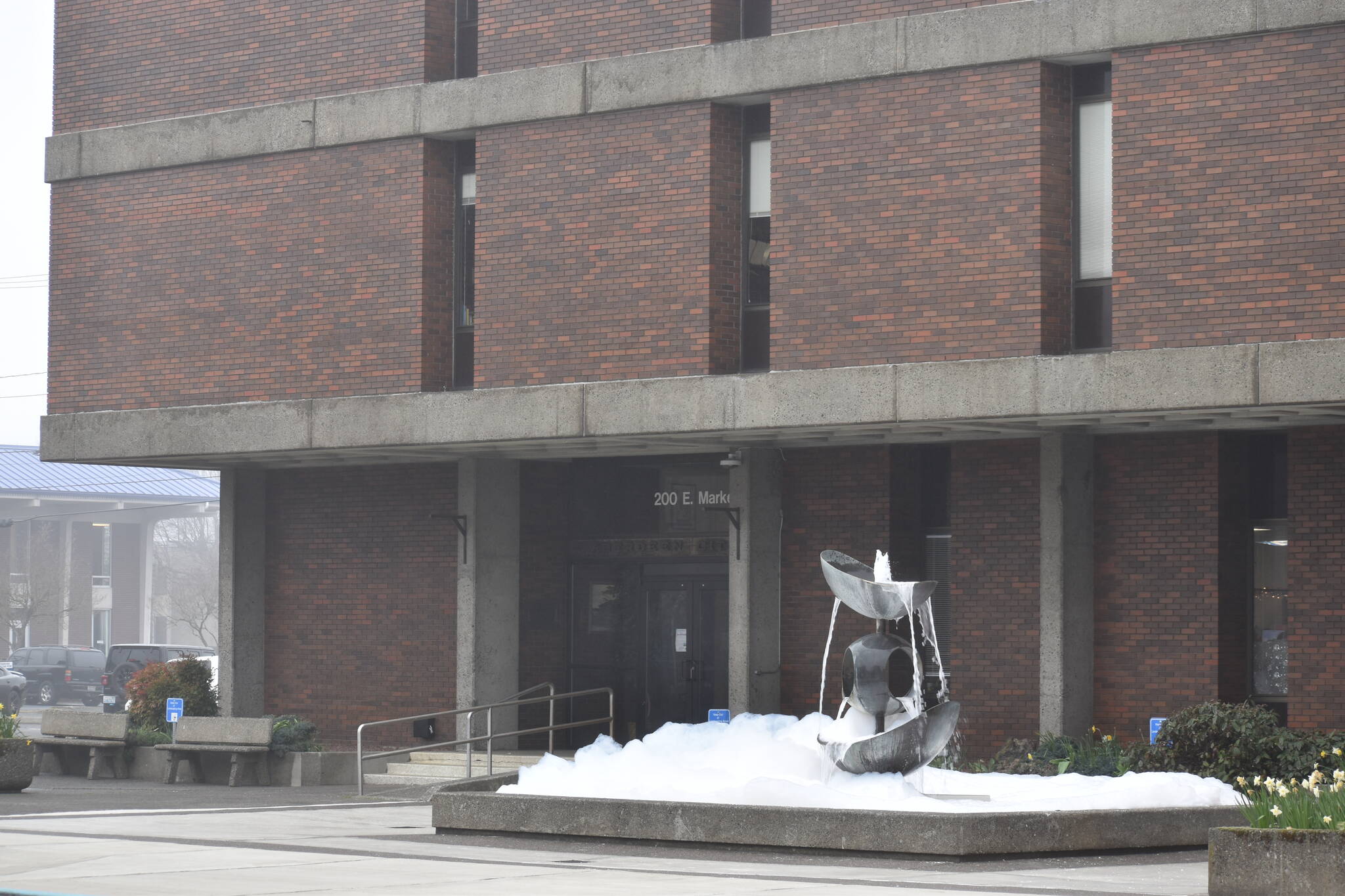Aberdeen City Council invited a registered dental hygienist (RDH) in order to explain why fluoride is important for city water.
Shelley Guinn, who’s the state oral health program manager for the Washington State Department of Health, spoke about what fluoride does, its effect on teeth and the rest of the human body, as well as what its absence used to cause.
Aside from one city councilor’s question after the approximate 30-minute presentation, Guinn appeared to answer any potential concerns regarding fluoride in the city’s water.
Guinn’s career has revolved around dental health, including 15 years as a clinical hygienist in private practice and then another 10 years “developing and managing programs that create avenues for vulnerable populations to access dental services.
Guinn immediately explained a few points about fluoride. Below were a couple of the points that stood out.
“No. 1, fluoride occurs naturally in all water,” Guinn said. “No. 2, fluoridation is the adjustment of the fluoride level. This can be up or down to just the right amount to prevent dental decay and benefit health.”
Those points led to her explaining a huge problem and how fluoride helps stop it.
“Tooth decay is the most common, chronic disease on the planet,” Guinn said. “It starts out as the most common, chronic disease of childhood. It’s extremely costly to treat and it can be prevented.”
Disease prevention is always the best approach, Guinn said.
“Dental caries, which is the name of the disease that causes holes in teeth that we call cavities, (are) no exception,” Guinn said. “This is a disease that once it gets started, it must be managed for the lifespan of the individual.”
Tooth decay can lead to many problems, including:
• Pain
• Discomfort
• Infection (abscess)
• Poor performance at school and work
• Low self-esteem
Decay can also lead to difficulties with:
• Eating
• Speaking
• Smiling
• Sleeping
• Talking with others
• Finding a job
Cost is a huge problem for many. It’s not always easy to get dental care. Without dental insurance, it’s a more serious problem.
“The (Centers for Disease Control) reported that for every adult without medical insurance, there are three without dental insurance,” Guinn said. “The Affordable Care Act does not make provisions for dental care for adults. But here in Washington, we do provide comprehensive dental benefits for folks who have Medicaid as their insurance.”
According to Guinn’s sideshow, tooth decay is “the most common reason for emergency room visits by uninsured in Washington.”
In addition to the charges for “dental-related emergency room” visits — more than $36 million in an 18-month period, according to the Washington State Hospital Association in 2018 — there are other problems, like the following:
“Oral infections are associated with and known to worsen systemic conditions such as diabetes, heart disease, and aspiration pneumonia.
Prior to water fluoridation
Guinn provided a grim analysis of what life before water fluoridation was like, including:
• The typical school child developed three to four new cavities each year. Extraction of permanent teeth was common in young children
• Dowries of new brides “sometimes” included dentures
• 10% of recruits into World War II were rejected because they did not have six pairs of contacting teeth
• In the 1940s, high school grads received complete dentures as gifts
• Full teeth removal and complete dentures were normal for adults
Regulated
Revised Code of Washington 43.20.050 requires the State Board of Health to adopt rules for group A public water systems necessary to assure “safe and reliable drinking water and to protect the public’s health. The regulations — such as chapter 246-290 WAC, which establishes the standards for the water systems — requires testing and certification.
“The Department of Health supports community water fluoridation as a sound, population-based public health measure,” Guinn’s slideshow states. “Community water fluoridation is a proven public health prevention measure that benefits both children and adults, regardless of age, race, gender, or income. The department encourages communities to begin and maintain optimal fluoride levels for health benefits in drinking water systems.”
Scientific community approval
According to Guinn’s slideshow, there is a lengthy list of organizations “that recommend the fluoridation of public water systems and recognize the public health benefits.” That list includes:
• The American Water Works Association (AWWA)
• World Health-Organization (WHO)
• American Medical Association (AMA)
• Canadian Medical Association (CMA)
• Centers for Disease Control (CDC)
• American Dental Association (ADA)
• Canadian Dental Association (CDA)
Despite Guinn’s evidence-based slideshow, there was one question from the city council. That came from Riley Carter, councilor for Aberdeen’s Ward 4. Despite stating he understands the good that fluoride provides, he wanted to know why people still need it in the water.
Guinn answered it clearly.
“It’s understandable why you would ask that question,” Guinn said. “We need fluoridated water along with fluoride in our toothpaste. Let me explain why. The fluoride in our toothpaste provides a temporary, higher dose of fluoride that just stays in the mouth until you spit it out … whereas when we drink water with fluoride, it does get into our saliva. It does get into our salivary glands, and so that way it does help to continually be in our teeth. And we’re drinking water more often than we’re brushing our teeth. Hopefully you’re drinking water from the tap, and that way you’re getting that flush, that little tiny dose — that little, tiny, tiny bit of fluoride on your tooth enamel every time you drink water and … an even tinier amount that may come through your salivary glands.”


